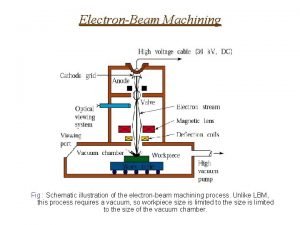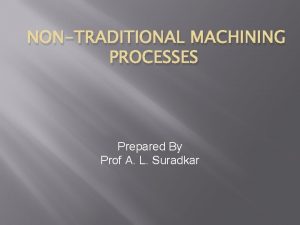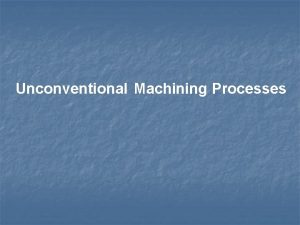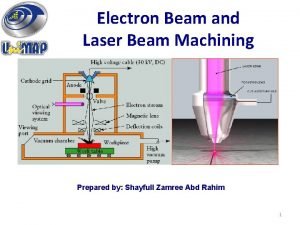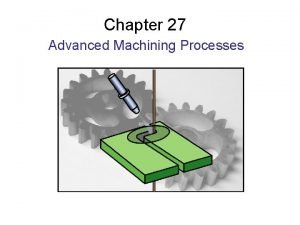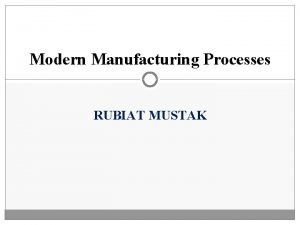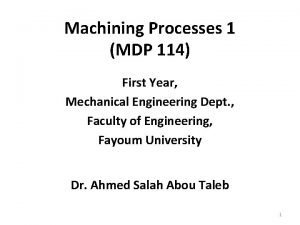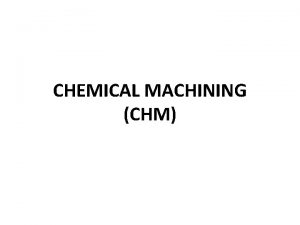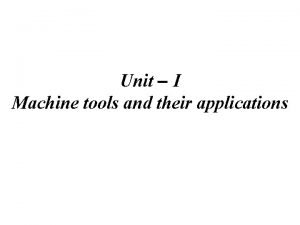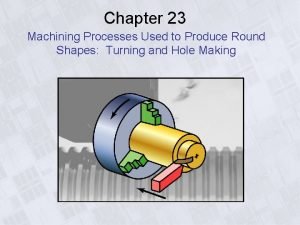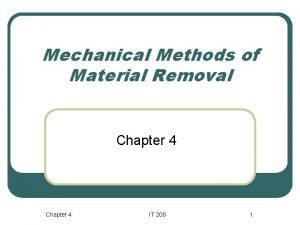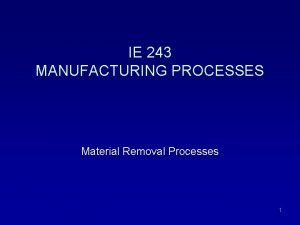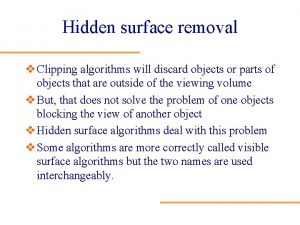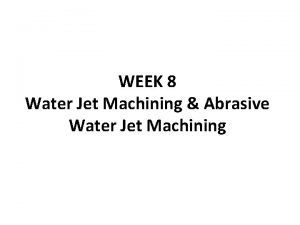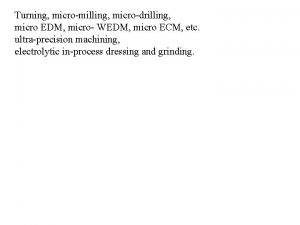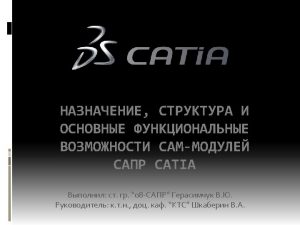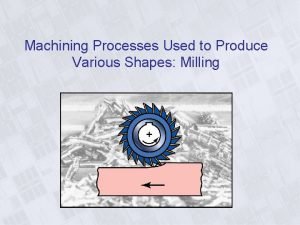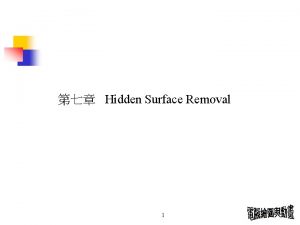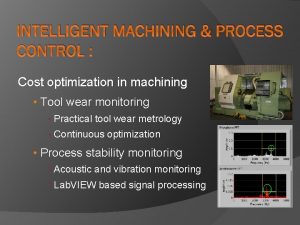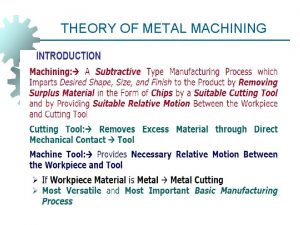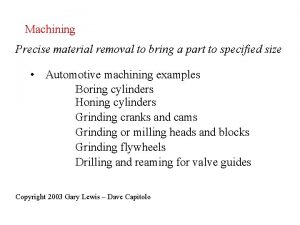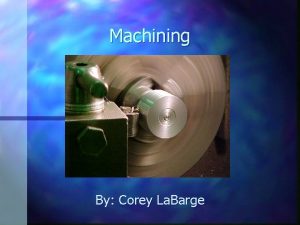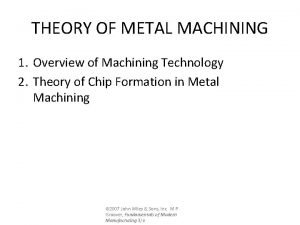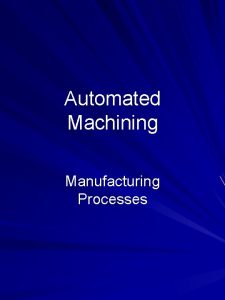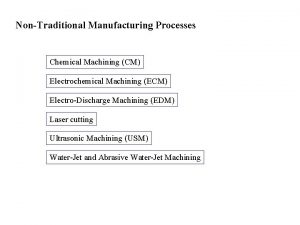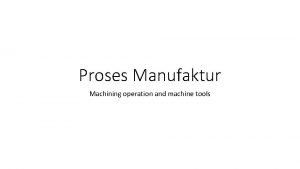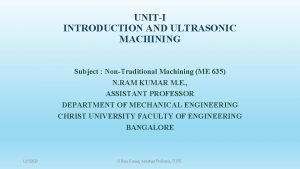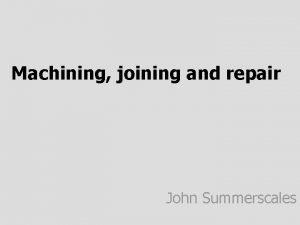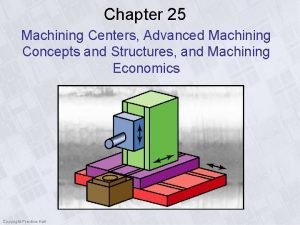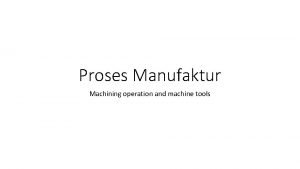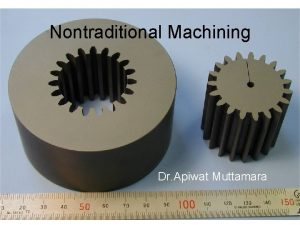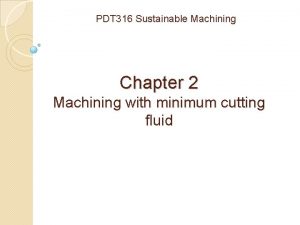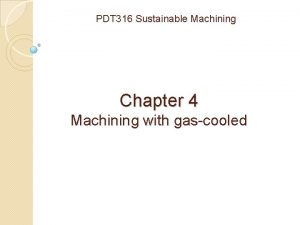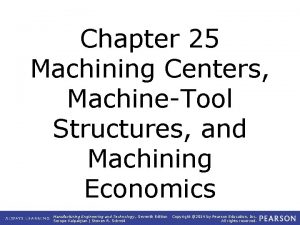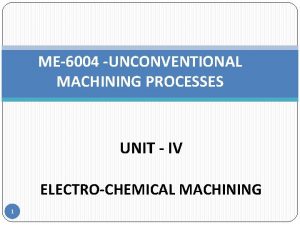Machining A material removal process in which a






















- Slides: 22

Machining A material removal process in which a sharp cutting tool is used to mechanically cut away material so that the desired part geometry remains • Most common application: to shape metal parts • Machining is the most versatile and accurate of all manufacturing processes in its capability to produce a diversity of part geometries and geometric features Casting can also produce a variety of shapes, but it lacks the precision and accuracy of machining

MACHINING OPERATIONS AND MACHINE TOOLS • • • Turning and Related Operations Drilling and Related Operations Milling Machining Centers and Turning Centers Other Machining Operations High Speed Machining

Classification of Machined Parts 1. Rotational - cylindrical or disk-like shape 2. Nonrotational (also called prismatic) - block-like or plate-like Figure - Machined parts are classified as: (a) rotational, or (b) nonrotational, shown here by block and flat parts

Machining Operations and Part Geometry Each machining operation produces a characteristic part geometry due to two factors: 1. Relative motions between the tool and the workpart • Generating – part geometry is determined by the feed trajectory of the cutting tool 2. Shape of the cutting tool • Forming – part geometry is created by the shape of the cutting tool

Figure: Generating shape: (a) straight turning, (b) taper turning, (c) contour turning, (d) plain milling, (e) profile milling

Figure : Forming to create shape: (a) form turning, (b) drilling, and (c) broaching

Figure - Combination of forming and generating to create shape: (a) thread cutting on a lathe, and (b) slot milling

Turning A single point cutting tool removes material from a rotating workpiece to generate a cylindrical shape • Performed on a machine tool called a lathe • Variations of turning that are performed on a lathe: Facing Contour turning Chamfering Cutoff Threading

Figure - Turning operation

Facing Tool is fed radially inward Figure : facing

Contour Turning Instead of feeding the tool parallel to the axis of rotation, tool follows a contour that is other than straight, thus creating a contoured form Figure : contour turning

Chamfering Cutting edge cuts an angle on the corner of the cylinder, forming a "chamfer" Figure : chamfering

Cutoff Tool is fed radially into rotating work at some location to cut off end of part Figure : cutoff

Threading Pointed form tool is fed linearly across surface of rotating workpart parallel to axis of rotation at a large feed rate, thus creating threads Figure : threading

Boring • Difference between boring and turning: Boring is performed on the inside diameter of an existing hole Turning is performed on the outside diameter of an existing cylinder • In effect, boring is an internal turning operation • Boring machines Horizontal or vertical - refers to the orientation of the axis of rotation of machine spindle

Figure - A vertical boring mill –for large, heavy workparts

Drilling • Creates a round hole in a workpart • Contrasts with boring which can only enlarge an existing hole • Cutting tool called a drill or drill bit • Customarily performed on a drill press Figure (b) drilling

Reaming Used to slightly enlarge a hole, provide better tolerance on diameter, and improve surface finish Figure - Machining operations related to drilling: (a) reaming

Tapping Used to provide internal screw threads on an existing hole Tool called a tap Figure (b) tapping

Counterboring Provides a stepped hole, in which a larger diameter follows a smaller diameter partially into the hole Figure (c) counterboring

Milling Machining operation in which work is fed past a rotating tool with multiple cutting edges • Axis of tool rotation is perpendicular to feed direction • Creates a planar surface; other geometries possible either by cutter path or shape • Other factors and terms: Milling is an interrupted cutting operation Cutting tool called a milling cutter, cutting edges called "teeth" Machine tool called a milling machine

Figure - Two forms of milling: (a) peripheral milling, and (b) face milling
 Electron beam machining diagram
Electron beam machining diagram Characteristics of unconventional machining process
Characteristics of unconventional machining process Classification of modern machining process
Classification of modern machining process Process parameters of electron beam machining
Process parameters of electron beam machining Machining process
Machining process Classification of modern machining process
Classification of modern machining process Machining process
Machining process Chm machining
Chm machining Tool holding devices in lathe
Tool holding devices in lathe Straight turning
Straight turning Mechanical material removal
Mechanical material removal Material removal processes
Material removal processes Some polygons
Some polygons Geometric symbol
Geometric symbol Material usage variance = material mix variance +
Material usage variance = material mix variance + Material culture example
Material culture example Material and non material culture examples
Material and non material culture examples All groups create norms to enforce their cultural values.
All groups create norms to enforce their cultural values. Useful and harmful material at home
Useful and harmful material at home Disadvantages of abrasive water jet machining
Disadvantages of abrasive water jet machining Micro machining processes
Micro machining processes Prismatic machining catia
Prismatic machining catia Shapes machining
Shapes machining
